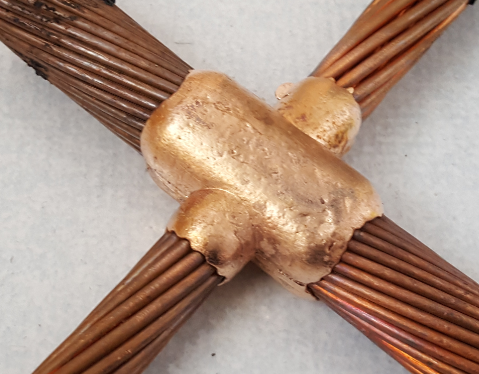Kinds of Welding - TIG, Stick, and MIG Form 90% of All Welding
What are the various kinds of welding along with what are they useful for? If you are searching for the 20,000 foot look at the different sorts of welding in addition to applications, stay for any minute, I do believe I will help.
Stick welding
Stick welding can often be called Arc welding although that's a misnomer because TIG welding and MIG welding are in fact arc welding processes too. But ARC welding is the thing that most people still call stick welding. Stick welding will be the old-fashioned sort of welding that grandpa used to do to solve his tractor inside the barn. It utilizes a stick electrode as being a 6013, 6011, or 7018 welding rod which is chucked in an electrode holder that appears somewhat just like a battery jumper cable clamp. The rod is struck as being a match to find the arc going along with the rod is fed in to the puddle mainly because it burns. Stick welding is pretty simple and easy the stick welding machine is straightforward too and in addition pretty cheap. You can buy a Lincoln 225 AC welding machine at any Lowe's for way below 300 dollars.
MIG welding
Mig welding is regarded as one of several easiest categories of welding to understand. Why? Because the rod won't have to become fed as it shortens like with stick welding. A wire is fed by having a cable and out your end with the mig welding gun and all sorts of operator is necessary to do is to pull the trigger and weld. Sounds easy right? Well it is not so simple. It's a tiny bit better to learn than stick welding however only a bit.
Mig welding actually form of describes 2 kinds of welding...bare wire mig, AND flux core welding.
Bare wire mig is cleaner, and may weld thinner metal, but flux core is a lot easier to use outdoors and will not have to have a cylinder of mig welding gas or possibly a flow meter. Flux core welding is generally either useful for cheap hobby welder s where the buyer won't desire to give the gas along with a gas conversion kit, or for really robust applications like earth moving equipment and high production welding. 
TIG welding
TIG welding is considered among the more difficult forms of welding to learn...harder to get down than mig or stick welding. This is because both hands should tig weld. One hand holds a tig torch with a tungsten electrode providing you with the arc and warmth...and yet another hand feeds the rod. TIG welding equipment is generally costlier and much more tough to create as there is commonly a remote amperage control pedal included plus it requires a cylinder of argon or argon mix shielding gas to work.
Tig welding is easily the most versatile type of welding of. Almost all conventional metals could be welded with all the tig process. Carbon and occasional alloy steels, metal, nickel alloys, aluminum, magnesium, titanium, cobalt, and copper alloys can all be welded on this welding.
Plasma arc welding
Plasma arc welding is comparable to tig welding other than the tungsten electrode is recessed within a nozzle and the heat is produced by ionizing gasses flowing throughout the arc. Plasma arc welding can be used where high precision is required along with situations the place where a recessed electrode is beneficial. Plasma arc welding is utilized extensively in aerospace applications for dimensional restoration of air seals and jet engine blade repair where thicknesses will often be below .015" and amperages used are often single digit.
Gas welding
Gas welding is one of the old-fashioned categories of welding. Oxygen and Acetylene is among the most popular setup for any gas welding kit and gas welding continues to be used a whole lot for automotive exhaust applications, along with by homebuilt airplane enthusiasts for welding 4130 chromoly tubing for airplane fuselages. It truely does work. It's portable. And it's also fairly versatile... You may still find some people that recommend gas welding for even welding aluminum.
A lot of people think that tig welding is way better than gas welding. I am among those people.
Electron beam and laser welding.
Most of these welding are viewed high energy welding processes simply because they pinpoint heat a great deal superior to older more conventional categories of welding. Electron beam welding can penetrate through 6 inches of steel without the bevel.
Laser welding can pinpoint heat so precisely that weld metal could be deposited over a tool steel injection mold cavity so precisely that heat treatments might be eliminated in support of minimal machining is needed as a way to restore dimensions.
To get more information about Thuoc han hoa nhiet Kumwell website: click to read more.